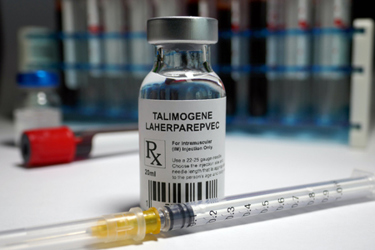Addressing Challenges In Serialization For Complex Therapeutics
By Ana-Zeralda Canals Hamann, Debiopharm

In the pharmaceutical industry, ensuring product safety and integrity is paramount. Serialization, the process of assigning unique codes to individual drug units, is indispensable for tracking and tracing throughout the supply chain.
It's not just a regulatory requirement but also strategically crucial for inventory management, operational efficiency, and brand protection. Serialization enables stakeholders to authenticate products, identify counterfeit drugs, and respond swiftly to quality issues or recalls, safeguarding public health and industry viability. It's a vital defense against illicit activities, offering end-to-end visibility and enhancing the industry's resilience in the face of evolving risks.
Challenges And Bottlenecks
While the advantages of serialization are clear, its implementation presents significant hurdles for pharmaceutical manufacturers. One of the primary challenges is the sheer magnitude of the task, particularly for companies with extensive product portfolios and intricate supply chains. Rolling out serialization across multiple facilities, coordinating with contract manufacturers, and ensuring compliance with diverse regulatory requirements necessitate meticulous planning and execution.
Moreover, serialization introduces additional complexities to existing production processes. Integration with enterprise systems, such as enterprise resource planning (ERP) and manufacturing execution systems (MES), requires careful configuration and testing to avoid disruptions. Additionally, the transition to serialization may necessitate upgrades to infrastructure and technology, further adding to the complexity and cost of implementation.
Furthermore, achieving interoperability and data exchange among stakeholders across the supply chain remains a persistent challenge. Standardization of data formats, communication protocols, and regulatory requirements is essential to ensure seamless collaboration and information sharing. However, achieving consensus among diverse stakeholders, including manufacturers, wholesalers, distributors, and regulatory authorities, can be arduous.
Best Practices For Successful Serialization
Despite these challenges, several best practices can help pharmaceutical companies navigate the serialization landscape effectively and prevent bottlenecks in implementation:
Early planning and stakeholder engagement
Begin the serialization journey with comprehensive planning and stakeholder engagement. Establish cross-functional teams comprising representatives from operations, IT, quality assurance, regulatory affairs, and supply chain management. Involve key stakeholders from the outset to foster alignment, gain buy-in, and mitigate resistance to change.
Robust technology infrastructure
Invest in a robust technology infrastructure capable of seamlessly supporting serialization requirements. Select serialization solutions that are scalable, flexible, and interoperable with existing systems. Conduct thorough evaluations and pilot tests to assess the compatibility and performance of serialization software and hardware components. Here are some examples:
- Standardized bar code systems — Implementing standardized bar code systems, such as GS1 standards, ensures that each drug unit is assigned a unique identifier that can be read and understood by various systems throughout the supply chain.
- Integration with existing systems — Pharmaceutical companies can deploy interoperable technology by integrating serialization solutions with their existing inventory management, logistics, and quality control systems. This integration ensures smooth data exchange and real-time visibility across different departments and partners.
- Cloud-based platforms — Deploying cloud-based serialization platforms allows for centralized data storage and accessibility, enabling stakeholders across the supply chain to access real-time information securely. These platforms often offer built-in interoperability features, allowing seamless integration with third-party systems.
- API integration — Application programming interface (API) integration enables different software systems to communicate and share data efficiently.
- Collaboration with partners — Collaborating with supply chain partners, including contract manufacturers, distributors, and regulatory authorities, is essential for deploying interoperable technology effectively. Establishing standardized data exchange protocols and ensuring compliance with industry standards facilitate seamless communication and interoperability across the entire supply chain ecosystem.
Clear communication and training
Communication is paramount throughout the serialization implementation process. Provide clear and consistent communication to employees, suppliers, and customers regarding the rationale, timelines, and expectations associated with serialization. Offer comprehensive training programs to ensure that personnel are proficient in serialization procedures, data management, and compliance requirements.
Risk assessment and mitigation
Conduct rigorous risk assessments to identify potential vulnerabilities and mitigate risks associated with serialization implementation. Anticipate potential disruptions, such as production downtime, data inaccuracies, or regulatory non-compliance, and develop contingency plans accordingly. Implement robust quality management systems to monitor and address deviations promptly. Examples include:
- Production downtime — During the implementation phase, there's a risk of production downtime if systems are not properly integrated or if there are technical issues with serialization equipment. For example, if serialization hardware malfunctions or encounters compatibility issues with existing production lines, it could result in delays and interruptions to manufacturing processes.
- Data inaccuracies — Serialization involves managing vast amounts of data related to product identification, tracking, and tracing. There's a risk of data inaccuracies if systems are not properly calibrated or if there are errors in data entry or transmission. For instance, incorrect serialization codes assigned to drug units could lead to confusion during distribution and authentication processes.
- Regulatory non-compliance — Compliance with regulatory requirements is critical in the pharmaceutical industry. There's a risk of regulatory non-compliance if serialization processes do not meet the standards and guidelines set forth by regulatory authorities. For example, failure to implement serialization in accordance with regulations such as the Drug Supply Chain Security Act (DSCSA) in the United States could result in penalties and legal consequences.
- Supply chain disruptions — Serialization implementation can impact various stakeholders within the supply chain, including suppliers, contract manufacturers, distributors, and regulatory agencies. There's a risk of supply chain disruptions if these stakeholders are not adequately prepared for serialization requirements or if there are delays in implementing necessary changes. For instance, if contract manufacturers are unable to integrate serialization capabilities into their production processes in a timely manner, it could disrupt the flow of products within the supply chain.
Collaboration with partners and regulators
Foster collaboration with external partners, including contract manufacturers, packaging suppliers, logistics providers, and regulatory authorities. Engage proactively with regulatory agencies to stay abreast of evolving requirements and guidelines. Participate in industry forums, working groups, and pilot programs to share insights, best practices, and lessons learned.
Continuous improvement and adaptation
Serialization is an ongoing journey rather than a one-time initiative. Embrace a culture of continuous improvement and adaptation to optimize serialization processes continually. Solicit feedback from stakeholders, monitor performance metrics, and leverage data analytics to identify opportunities for efficiency gains and process optimization.
Some areas that require ongoing enhancement include:
- Technology integration — Serialization systems need to integrate seamlessly with existing infrastructure and emerging technologies. Continuous improvement involves staying abreast of technological advancements and ensuring compatibility with new hardware, software, and communication protocols.
- Data management — Serialization generates vast amounts of data that require efficient management, storage, and analysis. Continuous improvement efforts focus on optimizing data handling processes, implementing data integrity measures, and leveraging analytics to derive actionable insights for supply chain optimization and regulatory compliance.
- Interoperability — Achieving interoperability between serialization systems and stakeholders' systems remains a challenge. Continuous improvement efforts aim to establish standardized data exchange protocols, enhance API integration capabilities, and foster collaboration among supply chain partners to ensure seamless communication and information sharing.
- Regulatory compliance — Regulatory requirements related to serialization are subject to change, necessitating ongoing compliance efforts. Continuous improvement involves monitoring regulatory developments, updating systems and processes accordingly, and maintaining documentation to demonstrate compliance with evolving standards and guidelines.
- Counterfeit prevention — Serialization plays a crucial role in combating counterfeit drugs, but counterfeiters continue to adapt and exploit vulnerabilities. Continuous improvement efforts focus on enhancing authentication technologies, implementing anti-counterfeiting measures such as tamper-evident packaging, and collaborating with regulatory agencies and law enforcement to deter illicit activities.
- Supply chain visibility — Serialization enhances supply chain visibility, but achieving end-to-end visibility across complex supply chains remains a challenge. Continuous improvement involves leveraging serialization data to track products in real time, identify bottlenecks, and optimize inventory management, logistics, and distribution processes.
- Training and education — Effective serialization implementation requires a skilled workforce with expertise in serialization technologies, regulatory requirements, and best practices. Continuous improvement efforts involve providing ongoing training and education to personnel at all levels to ensure proficiency in serialization processes and foster a culture of compliance and continuous improvement.
Unique Experiences And Insights
In addition to best practices, pharmaceutical companies can draw valuable insights and lessons from the experiences of their peers and industry leaders. Collaborative forums, conferences, and case studies provide opportunities to learn from real-world implementations, challenges, and success stories.
These are the ones to pay attention to:
| Forums and professional networks | Conferences and workshops |
|---|---|
| GS1 Healthcare: GS1 is a leading organization in standards for global commerce, including pharmaceutical serialization. Their healthcare section often hosts forums and discussions on serialization standards and practices. | INTERPHEX: This is a large conference for pharmaceutical and biotech professionals that often includes workshops and seminars on serialization. |
| Pharmaceutical Serialization & Traceability Forum: This event and discussion forum focuses on updates, challenges, and innovations in pharmaceutical serialization. | CPhI Worldwide: Alongside being a major pharmaceutical trade show, CPhI hosts conferences and seminars that sometimes focus on serialization and track-and-trace technologies. |
| LinkedIn Groups: There are various groups on LinkedIn dedicated to pharmaceutical manufacturing and supply chain where professionals discuss serialization among other topics. Examples include "pharmaceutical supply chain & serialization" and "pharma serialization & traceability." |
Some companies have leveraged serialization as an opportunity to streamline and modernize their entire supply chain operations. By integrating serialization with advanced technologies such as blockchain, artificial intelligence, and the Internet of Things (IoT), these companies have enhanced visibility, transparency, and efficiency across the entire supply chain ecosystem.
Furthermore, pharmaceutical companies can benefit from engaging with regulatory authorities and industry associations to shape the future direction of serialization standards and regulations. Active participation in standards development organizations (SDOs), namely GS1, and regulatory harmonization initiatives can influence the evolution of serialization requirements in alignment with industry needs and technological advancements.
Conclusion
Serialization continues to be a top priority for the pharmaceutical industry, driven by regulatory mandates, patient safety imperatives, and operational considerations. While challenges and bottlenecks may arise during implementation, adherence to best practices and lessons learned from shared experiences can facilitate successful serialization deployment. By embracing collaboration, innovation, and continuous improvement, pharmaceutical companies can navigate the serialization landscape effectively and contribute to a safer, more secure pharmaceutical supply chain ecosystem.
About The Author:
 Ana-Zeralda Canals Hamann is an associate director of clinical trial supplies at Debiopharm. She has more than a decade in sponsor-side pharmaceutical clinical operations, CMC, supply chain management, regulatory, IP, project management, and preclinical services. She earned her M.Sc. in clinical research administration and a Ph.D. in molecular medicine from the University of Oxford.
Ana-Zeralda Canals Hamann is an associate director of clinical trial supplies at Debiopharm. She has more than a decade in sponsor-side pharmaceutical clinical operations, CMC, supply chain management, regulatory, IP, project management, and preclinical services. She earned her M.Sc. in clinical research administration and a Ph.D. in molecular medicine from the University of Oxford.
